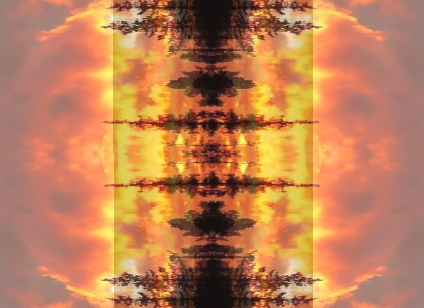Davidson hovers in the background in several of my recent posts, particularly where I try to sort out the connections, in scenarios of interesting coincidences, between the ontological layer (roughly: what types of entities exist), laws and lawlike constraints, and causality. It’s time to make this more explicit (and acknowledge some intellectual debts, too). The two elements I’m importing here are: the philosophical move of thinking about events as ‘under a description’, and a strategy of keeping the ontological level slim and restrained.
The first is originally an idea of Elizabeth Anscombe’s (introduced in her classic Intention): namely, that something I do can be intentional under one description and non-intentional under another. Davidson developed this idea and generalized it to mental concepts more broadly, as long as they are characterized by what is standardly called, following Brentano, intentionality: mental directedness or “aboutness”. In that form it is at the core of his well-known view called anomalous monism (developed over multiple essays, notably “Actions, Reasons, and Causes” and “Mental Events”, many of which are collected in his Essays on Actions and Events). Since I rely heavily on this move, I’ll expand a bit on it below.
The second element is, I think, a deeply rooted preference in Davidson (and the analytical tradition to which he belongs); for me, it is more a matter of expediency. I’m concerned here with a fairly rare kind of situation, a fringe type of experience, and I’d be hesitant to derive far-reaching consequences from it for a broader metaphysical outlook. So I want to remain conservative, and see whether I can develop an account within the parsimonious ontological framework within which Davidson operates. (Analytical philosophy has a bit of a track record of making highly particular, and sometimes even merely fictional, scenarios the touchstone for very broad and general metaphysical theories. But that’s really not my purpose here: I think metaphysics should aim to account for the typical, not the highly unusual. The latter might be interesting, and may require us to adjust and supplement, and I’m fine with doing so should the need arise. But unless and until that comes to pass, I’ll try to remain within what’s uncontroversially, even minimally available. And the Davidsonian framework, with its commitment to a slim ontology, is simply a good fit for that.)
With that out of the way, let’s go into a bit of detail about events “under a description”, then.

To characterize an event as an intentional action is to bring it under a specific type of description. The same event can be seen as intentional (i.e., as an intentional action) under some descriptions and as not intentional (an unintended action, or even a mere happening) under others. The universe is comprised of events: it’s their descriptions what makes some of them intentional actions.
Note that this at the same time restricts intentional actions, to be only a portion of the totality of events (not all events have descriptions under which they are intentional), and also potentially indefinitely multiplies what counts as intentional action (since a single event can be an intentional action under a multitude of descriptions). Depending on how we individuate them (as events or as actions), the domain of intentional actions may be both smaller and larger than that of events.
Since intentionality is what characterizes events under certain descriptions, not the events as such, there is also no way to extend causal explanation from the totality of events under one type of description, that of physical events (e.g. as movements of objects in space and time) to the realm of intentional action. Causation relates events independent of their descriptions (causes are the “cement of the universe”; AE xi); but explanation in terms of strict laws holds only between physical descriptions, and cannot be transferred into the intentional domain. This is what Davidson famously called the anomalism of the mental (since intentionality is a characteristic of any mental event, not just action intention, the finding can be generalized to the broader psychological domain).
In my analysis, the same idea gets applied to interesting coincidences. There, too, we have events, which are simply happenings among spatiotemporal items, subject to causation, which we might invoke, under a physical description, in an explanation that presents them as falling under strict laws. But the events, as in our guiding scenario, might not be directly causally related (neither of them is the cause of the other); in fact, if two events happen simultaneously (under standard-granularity physical descriptions), they couldn’t: for a cause precedes its effect, and therefore two simultaneous events cannot stand in the cause-effect relationship. That doesn’t mean that they are therefore “uncaused”, nor does it mean that the laws of causality don’t apply to them. For obviously, the simultaneous events are part of the same causal nexus, and each have their own causes. They might be, in fact, both effects of one and the same cause. They might be otherwise causally related, in an indirect manner; or they might be entirely unrelated, too.
However, having brought them under physical descriptions and analyzed their causes in terms of causal laws doesn’t yet tell us everything we might want to know about them. That is analogous to an analysis of intentional actions: simply considering them under their physical descriptions and analyzing their causes does not exhaust what we need to know about these events: in fact, for what we need to know it might be entirely irrelevant. Likewise for coincidental events. Their causal analysis might tell us nothing at all. (If it does, and e.g. tells us that the two events have a common cause, it might; but in that case, we no longer have an instance of what I’ve called an “interesting” coincidence.) But there may be descriptions under which we can bring the coincidental events which are not physical (and do not allow causal analysis), yet bring in a perspective under which we can say something important. Again, the analogy here is with intentional actions: these we can bring under descriptions which interest us for purposes of criminal investigation, moral evaluation, and so on. The difference in my proposal, as far as coincidences are concerned, is just that the type of descriptions under which we bring them to learn something interesting about them is not that of the intentionality of actions, or indeed even the more general intentionality that any kind of mental event has (by definition). It may not centrally involve intentionality at all — that may simply turn out to be one part of the mix. (It’s the element that comes in when a figuration is taken up, in a psychological process, which makes it what I have called a configuration.)
The analogy to Davidson lies not primarily in the content of the descriptions, but in the structural insight: that bringing events under different kinds of descriptions may reveal forms of intelligibility that are not captured by causal explanation. At this stage, I am treating the relevant descriptions (involving figurations and configurations) as distinct from both physical and intentional ones. Whether they ultimately belong within the domain of the mental, perhaps as a broader or derivative form of intentionality, remains an open question.
(This is important: in received discourse about this type of coincidences a common characterization is of them as meaningful, sinngemäß, subjectively significant, and so on. This implies intentionality on some level; but we can’t simply identify the type of descriptions as that of the intentionality of mental items, or of linguistic expressions, or something large and plot-like, or otherwise related to narrativity. I’m trying to avoid this: we’re talking about an independent and likely more complex type of description, different from both the physical and the mental, under which coincidences are brought when they appear as of the sort that interests us.)



